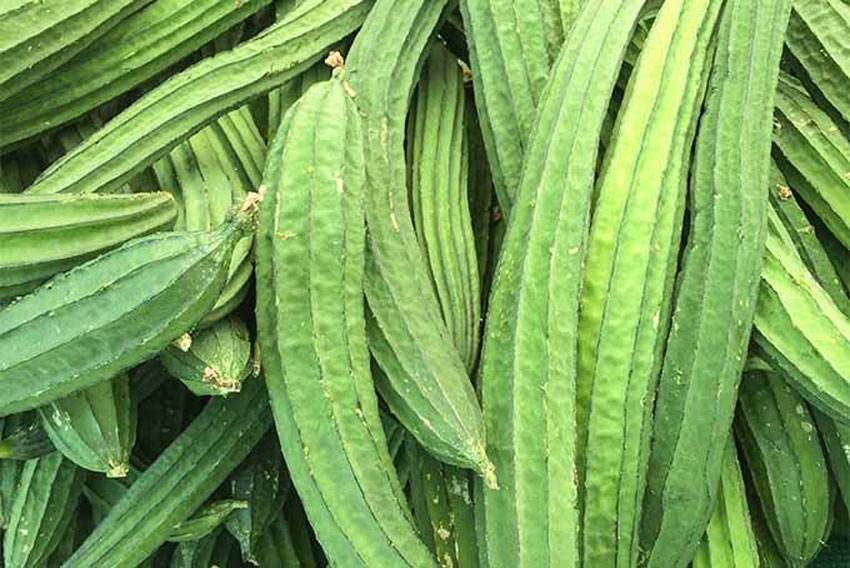Crops
Ridge Gourd

Ridge Gourd
Common Names: Ridge Gourd, Turai (तुरई), Dodka (दोडका), Beerakaya (Telugu), Peerkangai (Tamil)
Botanical Name: Luffa acutangula
Cultivation Area in India
-
Ridge gourd is widely grown across Maharashtra, Karnataka, Andhra Pradesh, Tamil Nadu, West Bengal, Bihar, Uttar Pradesh, and parts of Madhya Pradesh.
-
Andhra Pradesh, Maharashtra, and Karnataka are among the leading producers.
-
Cultivated both in open fields and kitchen/backyard gardens due to its adaptability.
Climate and Temperature Requirements
-
Warm and humid climate is ideal.
-
Grows best at 25°C to 35°C.
-
Sensitive to frost and waterlogging.
-
Can be grown year-round in tropical areas, but the main seasons are:
-
Kharif (monsoon)
-
Summer
-
Rabi (in southern regions with mild winters)
-
Soil Requirements
-
Prefers well-drained loamy or sandy loam soil.
-
Soil should be rich in organic matter, with good aeration.
-
Soil pH: 6.0 to 7.5 is ideal.
-
Avoid saline or heavy clay soils.
Cultivation Practices
-
Sowing Method: Direct sowing or transplanting of seedlings.
-
Seed Rate: ~4–5 kg/ha
-
Spacing: 1.5–2 m between rows, 0.5–1 m between plants
-
Support/Trellising: Plants should be trained on bamboo/stake/trellis for better air circulation, yield, and fruit quality.
-
Irrigation: Regular irrigation needed, especially during flowering and fruiting.
-
Fertilization: Apply well-decomposed FYM/compost + balanced NPK fertilizers.
Pests & Diseases
-
Common issues: Fruit fly, aphids, downy mildew, powdery mildew
-
Crop monitoring and timely control with organic or chemical sprays help reduce losses.
Harvesting
-
Harvest when fruits are young, tender, and 25–30 cm long.
-
Frequent picking promotes new fruit growth.
-
Yield: 80–120 quintals per hectare, depending on variety and management.
Blog
Explore Our Blog
About Us
Welcome to Agriplaza
Welcome to Agriplaza. India's first and only comprehensive digital platform dedicated to agriculture and farmers. Explore widest range of related data our figures speaks a lot.
738035
Visitors
239
Diseases
131
Pests




